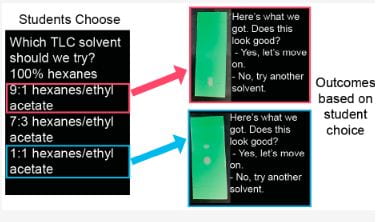Author: Helena Garia Escudero
Date: August 27, 2023
The flipped classroom model is an instructional approach that reverses the traditional order of learning activities. In a typical classroom, students listen to lectures and receive direct instruction from the teacher during class time, and then they complete homework assignments outside of class [3]. However, in the flipped classroom model, students engage with the instructional content before coming to class and use class time for collaborative and interactive activities.
I want to discuss this pedagogical strategy in one of the most challenging skills students have to develop as a student: coding. The difficulty level of coding for students can vary depending on several factors, including their prior experience, age, cognitive development, and the complexity of the coding concepts or languages they are learning [4].
The flipped classroom model can be highly suitable for teaching coding courses [1]. The traditional approach to teaching often involves lecturing in the classroom and assigning homework for practice. In a flipped classroom, the instructional content is delivered outside of class, typically through pre-course material, such as pre-recorded videos, questionnaires, or online resources, while the class time is dedicated to interactive activities, discussions, and problem-solving [3]. This strategy can be suitable and effective for several reasons:
–Active Learning: The flipped classroom encourages active learning, where students actively engage with the course content rather than passively listening to lectures. Coding is a skill that requires hands-on experience. It is a skill that cannot be acquired just by listening to a professor’s lecture. Thus, students can take ownership of their learning and engage more with the subject matter as they prepare for class [3].
–In-Class Problem Solving: In a flipped classroom, class time can be dedicated to collaborative activities, discussions, and problem-solving exercises. This allows students to apply the concepts they learned outside of class and receive immediate feedback from their peers and the instructor. Computer coding programs involve mainly problem-solving skills, and the flipped classroom provides an opportunity for students to practice and develop their problem-solving skills in a supportive environment [1,3].
–Individualized Pace: Students have the flexibility to learn at their own pace outside of class. They can adjust the time they dedicate outside the class as needed to feel ready to successfully complete the tasks covered in the lectures. This approach benefits students with different learning styles and allows them to grasp the foundational concepts before attending the in-person sessions [3,4].
–Real-time Clarification: In a flipped classroom, students can bring their questions and doubts to the class, allowing the instructor to provide real-time clarification. The instructor can address common misconceptions, elaborate on complex topics, and facilitate deeper understanding through interactive discussions and demonstrations.
However, this discussion would not be complete if I did not mention some challenges of the Flipped classroom:
–Student Preparedness: Students need to be motivated and willing to engage with the pre-class materials [1]. Ensuring students come prepared to class can be facilitated through regular assessments, incentives, or accountability measures. Professors and TAs must also be aware that not all students have the same initial knowledge, and they should balance and be flexible in adjusting the material that students should cover before the class. Constant communication and feedback between professor and students are essential [4,5].
–Technology Access: Access to technology and reliable internet connection is crucial for students to access pre-lecture material or online coursework. Institutions must ensure that students have the necessary resources to participate fully in the flipped classroom approach [2].
–Instructor Support: Instructors must design effective pre-class materials and learning resources and, facilitate engaging in-class activities. Instructors should be trained and supported to ensure they are comfortable with the flipped classroom approach and can guide students effectively [2].
Overall, while coding can present challenges, it is a skill that can be learned and improved with practice, persistence, and the right learning resources and support. The suitability of adopting the flipped classroom model for teaching physics courses depends on the specific context, the readiness of students and instructors, and the available resources [4,5]. Experimentation and evaluation can help determine its effectiveness in improving student learning outcomes in a particular setting.
References
[1] Sobral, Sonia. (2021). Flipped Classrooms for Introductory Computer Programming Courses. International Journal of Information and Education Technology. 11.178.10.18178/ijiet.2021.11.4.1508.
[2] Alhazbi, Saleh & Halabi, Osama. (2018). Flipping introductory programming class: potentials, challenges, and research gaps. 27-32. 10.1145/3290511.3290552.
[3] J. Bishop and M. Verleger, “The flipped classroom: A survey of the research,” in ASEE Annual Conference and Exposition, Conference Proceedings, 2013
[4] E. Marasco and M. M. M. Moshirpour, “Flipping the foundation: A multi-year flipped classroom study for a large-scale introductory programming course,” presented at ASEE Annual Conference and Exposition, 2017.
[5] C. Rosiene and J. Rosiene, “To flip or not to flip: Experiences with a hybrid approach,” presented at Frontiers in Education Conference, FIE, 2019.

